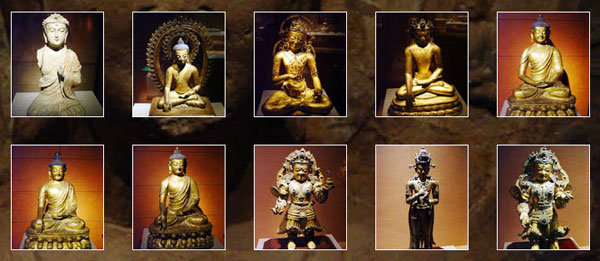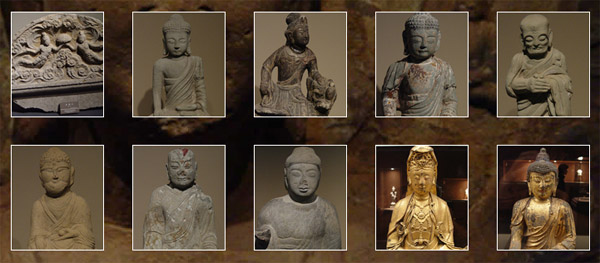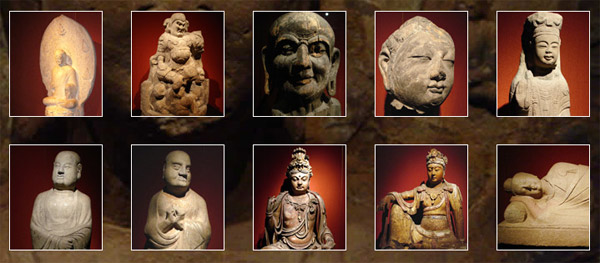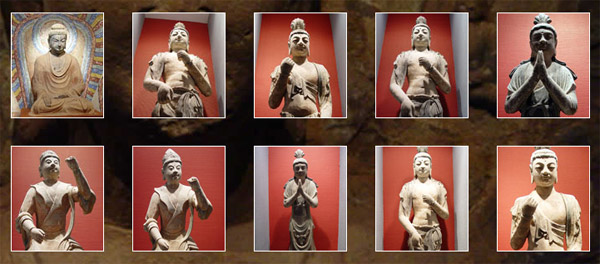
In this gallery, there are some 250 photos that I took this year while traveling around Beijing, Xi'an, Shanghai and Lanzhou. I have to confess that I know little about Buddhist culture; I simply found myself submerged in the beauty of Buddha.
A few of the images were familiar to me but some seemed bizarre and strange. I have little knowledge about the history of these figures so it is impossible for me to explain and classify them. It's also difficult for me to tell their origin or why they look and act as they do.
What can I do is simply publishing them in different catalogues according to the museums in which they are showcased. Also, I have tried to copy the placards beside them in museums, hoping that this information can help, or give hints, for you to understand them better.
If you want to know more about Chinese Buddhism, and if you are lucky enough to be in New York at the same time, here is some good news: as I am opening up my show in this gallery, an ongoing exhibition is also opening in New York City. "Buddhist Sculpture from China: Selections from the Xi'an Beilin Museum" continues through Dec. 8 at the China Institute, 125 East 65th Street, Manhattan: (212) 744-8181, chinainstitute.org.
I have the same wish as Holland Cotter, the New York curator. He wrote, "With this show, we have a chance to get to know them, ask questions of them, look at them, and look again. Their version of beauty won't change with time, but our beholding eyes might."
Beijing Capital Museum
 |
Review: The museum features some 150 Buddhist works of art ranging from the 5th through the 20th centuries. Most of them are gilt bronze sculptures emitting golden luster under muted lamps and a somber background. The museum hosts a special exhibition of Buddha figurines from Tibetan and Mongolian regions and many of them were made under imperial edicts. Full Text...
Xi'an Museum
 |
Shanghai Museum
 |
Review: The Gallery of Chinese Ancient Sculptures serves mainly as a showcase of over 120 Buddhist sculptures, placed in shrine-like displays and framed with lotus-petal shaped partitions, or standing alone on pedestals. These display methods blend to lend a veritable temple feeling to the hall and plunge the audience into a world where art and religion intertwine. Full Text...
Gansu Provincial Museum
 |
Shaanxi Provincial History Museum
 |
(China.org.cn by Wang Zhiyong November 20, 2007)